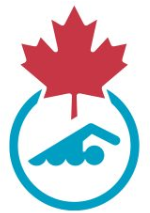Welcome to OAK!
Follow our Understanding OAK video series to learn more how to navigate the world of competitive swimming with OAK.
What is a Swim Meet?
A swim meet is a competitive event for our swimmers. It allows swimmers the opportunity to use the skills they have been learning throughout the year. Since the meet is timed and judged, it also gives swimmers the ability to compare how their skills have improved, from one meet to another.
Swim meets can span one or more days and are composed of sessions. Each session is about 4 hours in length - up to three sessions can be held on each day of a swim meet. Generally, younger swimmers only compete in a single session per day of a meet, generally in the afternoon. Older swimmers compete in a morning session and then may come back for an evening session, to swim in final events.
During each session of meet, swimmers compete in different events. Each event represents a stroke (freestyle, breaststroke, backstroke, butterfly) swum for a particular length (25m, 50m, 100m are all common lengths). Each session in a swim meet generally has 6 - 8 events.
Since pools generally have at most 8 lanes, only 8 swimmers can swim in an event at a time. Because of this, each event is broken up into heats. The number of heats depends on the number of swimmers entered into the event. Each heat starts with 8 swimmers on the blocks. At a start sound all the swimmers dive off the blocks and begin racing. Timers are present in each lane, to record the times for each individual swimmer. These times are all recorded and, once all the heats in an event have been completed, prizes (ribbons or medals) are often awarded for the top 3 fastest swimmers in each age category.
Swim meets are focused on swimmers, but parents have a big responsibility, too. Each session of a swim meet takes a lot of volunteers to run it: marshals to get the swimmers in place, timers to record times, judges to evaluate swimmers? strokes and other officials controlling and monitoring all aspects of the activities. Generally, up to 50 parent volunteers are required for each individual session of a swim meet.
Olympic Prospect swimmers participate in a series of meets called HOBC. At these meets we are joined by swimmers from Hamilton Aquatic Club, Brantford Aquatic Club and Cambridge Aquajets.




